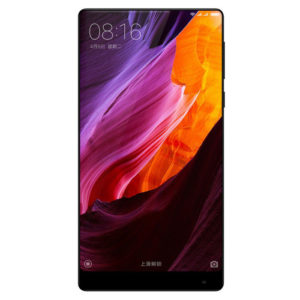I love smartphones. If you’ve read my column before, this probably does not come as a surprise. To help my addiction, I utilize T-Mobile’s original JUMP plan, which I’ve had since 2013. The original JUMP plan allows for something very unique: you can upgrade your phone every 6 months, with the removal of the old balance on the old device. Essentially, you pay a monthly fee on the phone, and can remove the remaining balance when you upgrade. Once you upgrade, you get a new monthly fee. T-Mobile changed the plan multiple times afterward in order to make it more profitable, but I got to keep the old one.
I’ve had a number of diverse devices on this plan, including the LG G Flex, HTC One M8, iPhone 6+, Blackberry Priv, Samsung Galaxy Note 5, iPhone 7+, and LG V20. The largest downside to this plan is that I am unable to use devices that are not sold by T-Mobile, such as the Google Pixel and other more exotic phones. I’ve always wanted to experience a unique device, and so I made a purchase outside of my plan: the Xiaomi Mi Mix. And, to my surprise, it has been my favorite smartphone to date.
The Mi Mix is a unique device for several reasons. It has a 6.4-inch display, which looks absolutely massive in comparison to other smartphones. However, it was the first device with flagship specs to feature a nearly bezel-less design. It has a similar body size to the iPhone 8+, which has only a 5.5-inch screen in comparison. I love the size of the screen, as it allows for tons of information to be displayed at once or an immersive video watching experience.

On the topic of bezels, it basically only has one at the bottom of the screen. This presents some interesting quirks. For one, the earpiece has been replaced with a speaker that vibrates the frame of the phone to make a sound. It does not sound as clear as a normal earpiece, but it gets the job done. Additionally, the front-facing camera is positioned at the bottom instead of the top. This was very awkward to get used to and still can be on occasion, but I don’t mind it nearly as much anymore. Some sacrifices were clearly made to meet the design they wanted. Even with these sacrifices, I still prefer this design over the iPhone X or Essential phone, which both have notches that cut into screen real estate.
The build is also unique. It is made of a shiny and reflective ceramic that is very similar to the material Apple used in a special edition of an Apple Watch. This surface gives off a premium look, and to add to said look, 18 karat gold is used to accent the camera and fingerprint scanner on the rear. Unfortunately, this material is not very strong and extremely prone to fingerprints, so much so that a case is included in the box with the phone.
Speaking of the camera: it sucks. A lot. It performs significantly worse than the camera you might find on any other flagship and even many mid-range devices. It lacks detail, dynamic range, and has subpar camera software to round it off. Using a Google Camera mod can help the situation, but it is still lacking.
Besides the camera, everything else is great. It has 256 GB of storage, 6 GB of RAM, a Snapdragon 821 processor, a headphone jack, and a huge 4400 mAh battery. These specs are still considered very high end, even though this phone is now a year old. To go along with these specs, it runs the Xiaomi Android skin, called MIUI. I typically dislike any heavy Android skin, and I didn’t mind this one very much at all. That being said, I took full advantage of the ability to unlock the bootloader and flashed a stock Android ROM. This made the overall experience of the phone even better.
Although I love this device, I don’t think I can recommend it to the average consumer. It is larger than what the average user wants. It is more fragile than the average smartphone. It lacks most US LTE bands, which means it only works well on T-Mobile and will not get the best service. It has a lackluster camera. And worst of all, it is not sold in the US. I picked it up used from a website called Swappa, but it can be purchased new from China for about $500. Importing a smartphone that takes multiple weeks to ship is a scary proposition.
Despite all of this, I love this phone. I love the battery size, the custom ROM development community, the screen size, the unique design, and the plentiful amount of RAM. I also love that Xiaomi is starting to show the world that they can create amazing flagship devices, too: diversity in the smartphone world is always a plus.
Be First to Comment